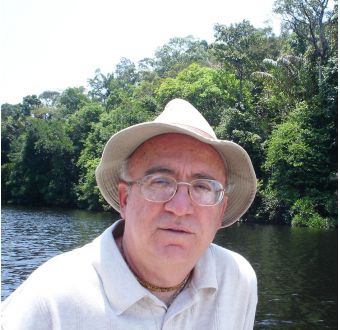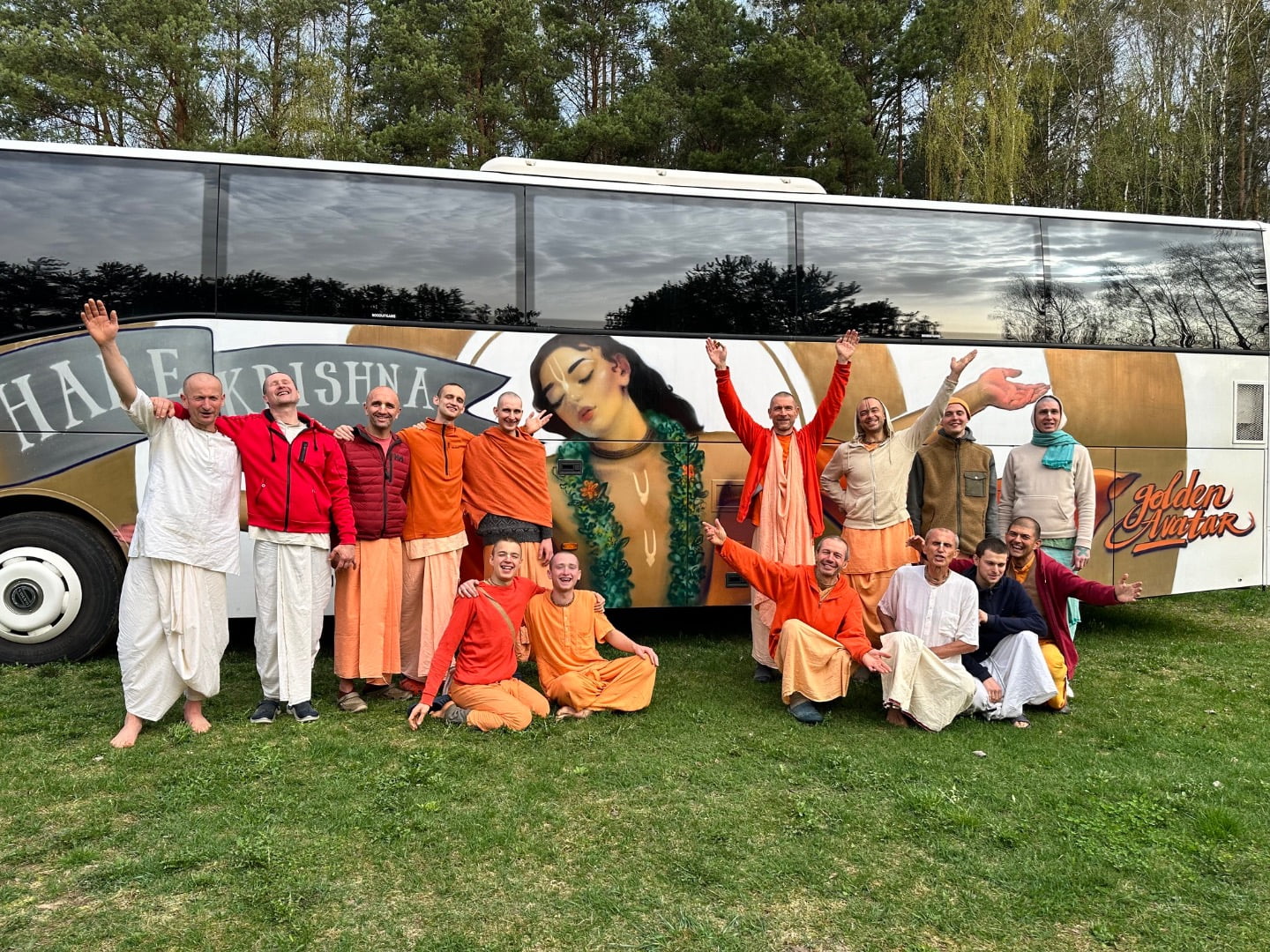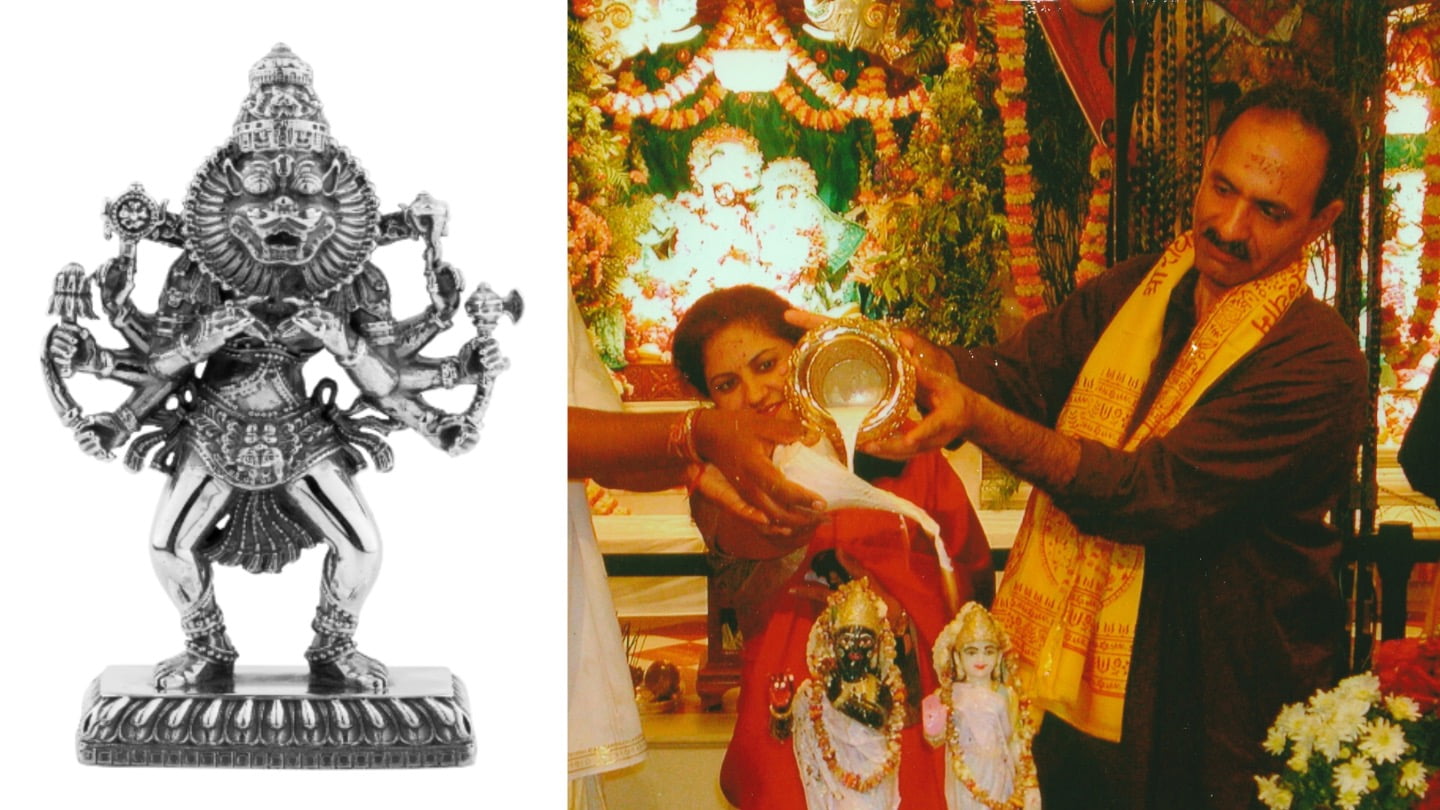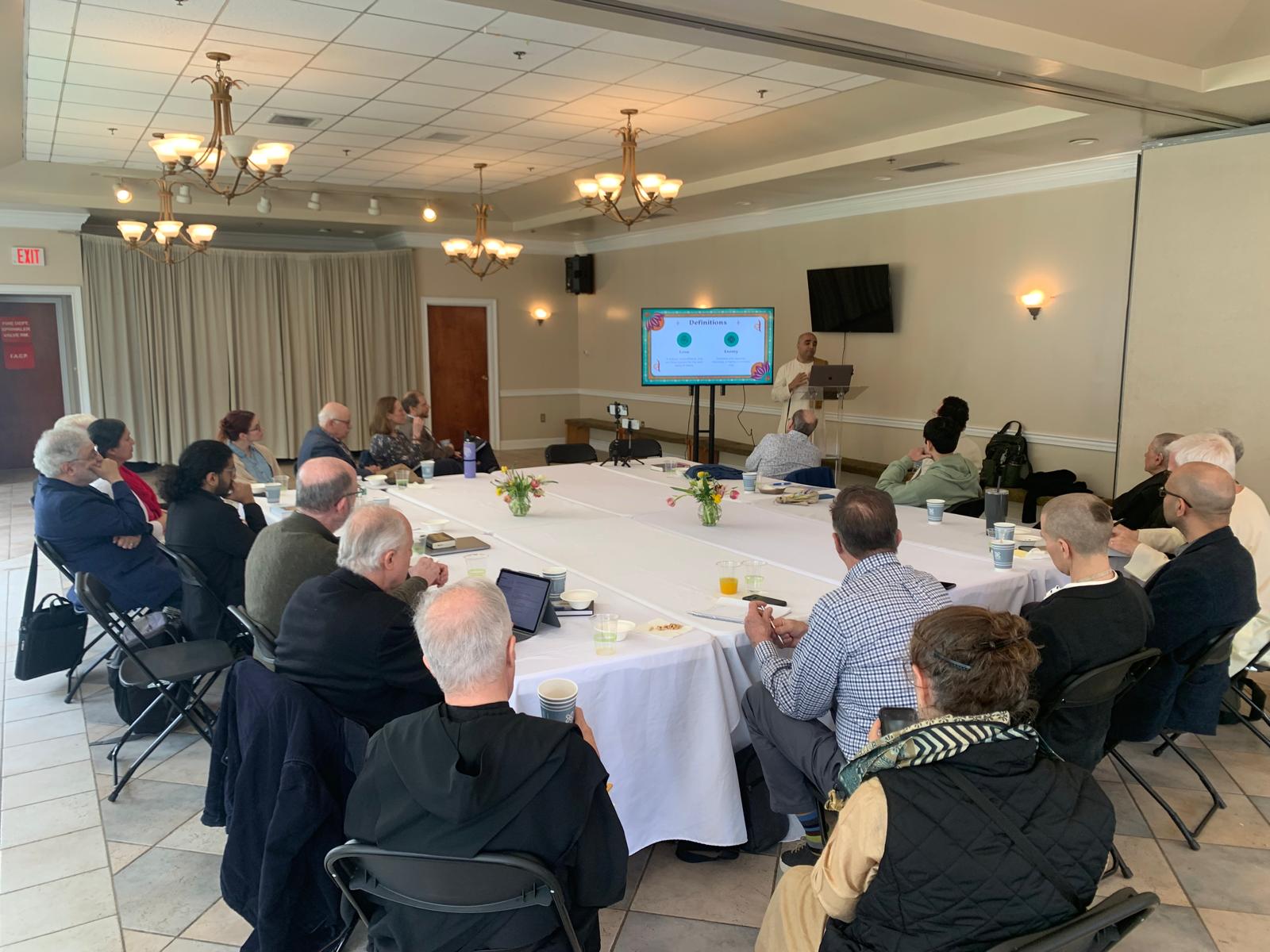The Forbidden Archeologist Returns
By Madhava Smullen | Nov 06, 2010

This month, Michael Cremo—whose books have sold 300,000 copies in 26 languages—returns with a new offering, simply entitled “The Forbidden Archeologist.”
Featuring his latest thoughts and findings on human antiquity—which date mankind’s origins to a time long before the 100,000 years ago given by modern science—he hopes it will appeal to a broad audience beyond the academic world.
A new book from Cremo is always something of an event. The man is polarizing to say the least—he has been both highly praised as an archeological detective who has “opened the locked doors of humanity’s history,” and despised as a pseudo-scientist whose books “do not deserve to be taken seriously by anyone but a fool.”
The Question Arises
Life started out quite normally for Michael Cremo. Born in the United States, he was raised as a Roman Catholic and went to High School and University, where he learned the standard theories of human origins—that human beings like us evolved from apes only about one hundred thousand years ago.
And he didn’t have any real reason to question it. But when he joined ISKCON in 1973—and was initiated by ISKCON founder Srila Prabhupada as Drutakarma Dasa—that soon changed.
“Srila Prabhupada brought me in contact with a completely different way of looking at the whole question of human origins,” he says now. “He was pretty emphatic in his books and lectures that human beings did not evolve from apes, but have always been present on earth. And the Srimad Bhagavatam and other Puranas, which he wrote commentaries to, gave human histories going back many millions of years.”
Srila Prabhupada wanted his disciples to support these sastric statements by showing them in scientific terms as well. Although Drutakarma had studied foreign languages in university, not science, this was something that appealed to him. And with his interest in writing, he felt that it was a contribution he could make.
Working with ISKCON’s Premier Scientist
His first move, in 1976, was to join the staff of Back to Godhead magazine in Los Angeles. Later, after he had worked with his godbrother Mukunda Goswami on some successful introductory books for ISKCON’s publisher the Bhaktivedanta Book Trust, he was requested by the BBT trustees to work with the late Sadaputa Dasa—who had a PhD in mathematics from Cornell University—on a science project.
In 1984, the pair produced Origins magazine, a once-off publication that gave Krishna conscious perspectives on a variety of scientific topics.
“Working with Sadaputa Prabhu was like getting a Master’s Degree in science and religion,” says Drutakarma. “In order to write the articles for Origins magazine, I would sit down with him and interview him very carefully. And during that time I really got a sense of what the Krishna conscious position was on such questions as the origin of life and the universe.”
Impressed by Origins magazine, the BBT launched a plan to turn each part of it into a book, and Drutakarma took on the section that dealth with the theory of human evolution. In 1986, he and Sadaputa began an incredible eight years of researching and writing for the book, which was to become the famous Forbidden Archeology. In 1993, the encyclopedic volume—which presented stacks of archeological evidence that contradicted the Darwinian theory of evolution—was published by Torchlight.
A Warm Welcome at the World Archeological Congress
A year later, Drutakarma received an invitation to submit a paper for presentation at the World Archeological Congress—the largest gathering of archeologists on the planet—in New Delhi, India. He decided to submit a paper entitled “Puranic Time in the Archeological Record.” In it, he discussed the concept of cyclical time as presented in the Srimad-Bhagavatam and other Vedic scriptures, which strongly clashed with modern science’s views of mankind’s origins.
“The Puranic concept of time involves cycles of four yugas—Satya, Treta, Dvapara, and Kali,” he explains. “Each cycle of these four yugas lasts 4.32 million years. One thousand of such cycles—or 4.32 billion years—make up one day of the creator Lord Brahma, called a Kalpa. Each Kalpa is divided into 14 manvantara periods, each lasting 71 yuga cycles. According to Puranic accounts, we are now in the twenty-eighth yuga cycle of the seventh manvantara period of the present day of Brahma. This would mean that, according to the Puranas, human beings have been around for 2.3 billion years.”
When Drutakarma’s paper was accepted, he found himself nervous about the impending response as he traveled to New Delhi to present it. He was a member of ISKCON, presenting Vedic ideas about human origins at a major international scientific conference for the first time. He felt as if he was jumping out of an airplane with no parachute. But he had no reason to worry.
“At such large academic conferences, people can look at the schedule, and decide which of the many lectures being given simultaneously they’d like to attend,” he explains. “As I stood there to present my paper, I was pleasantly surprised to see that the room was quickly filling up. Afterwards, I learned that archeologists from around the world had been aware of the talk, and they were very interested to hear what I had to say. Many Indian archeologists were especially appreciative—they found it fascinating that somebody from the West was presenting a paper like this.”
After the conference, Drutakarma received a notification that his paper had been selected for publication in the official conference proceedings volumes by Rutledge, a major scientific publisher.
The Forbidden Archeologist
In 1998, in answer to readers’ enquires about scientists’ reaction to his work, Drutakarma released Forbidden Archeology’s Impact, which included all the different reactions to his book, along with his responses. In 1999, he released an abridged version of Forbidden Archeology, called the Hidden History of the Human Race, which was translated into twenty different languages. Drutakarma continued to get invitations to speak at universities and scientific institutions in various parts of the world.
In the meantime, he had been working on a new book. Since Forbidden Archeology had presented archeological evidence that contradicted Darwin’s theory of evolution, people had asked him, “If you don’t believe in evolution, what’s your theory? How do you think human beings came about?” To answer that question, Drutakarma released Human Devolution: A Vedic Alternative to Darwin’s Theory in 2003.
“All this time, I was also trying to reach out to the general public—not just the academic and scientific worlds,” Drutakarma says. “So in 2001, as part of that effort, I began writing a regular column called The Forbidden Archeologist for Atlantis Rising, a US-based alternative science Magazine.”
Drutakarma’s brand new book, slated for release on November 9th, is a compilation of forty-nine Atlantis Rising columns published between 2001 and 2009. Although the topics are serious, the language is accessible to a general audience. And the columns are short—at 1,500 words, they’re just a bit more digestible than Forbidden Archeology’s daunting 900 pages.
The articles cover a variety of different topics. For example Drutakarma, tells of his experiences in presenting his information at scientific conferences around the world, and the reaction he receives.
He also addresses the current opinion of historians and archeologists that Vedic culture entered India 3,500 years ago from outside, through what they call an Aryan migration. “In the Vedic literature itself, we see no hint of any such thing,” he says. “Vedic culture is native to India, and has been there for at least 5,000 years—even, according to the Puranas, millions of years.”
Other articles in the collection concern the history of archeology in India. While many historians say that that it only began with excavations by western scientists, Drutakarma shows that there was an indigenous Indian tradition of archeology going back hundreds of years.
“For example, Chaitanya Charitamrita and other literatures say that in the 16th century, the founder of Gaudiya Vaishnavism Sri Chaitanya Mahaprabhu went to Vrindaban—the site of Lord Krishna’s appearance on earth—and excavated lost sacred places and lost deities of Krishna,” he says. “So the Vrindaban that we visit today is the result of archeological work that was carried out by Lord Chaitanya hundreds of years ago.”
Did Man Evolve From Apes—Or Did the Two Coexist?
One of the most interesting topics Drutakarma raises in The Forbidden Archeologist is that of the new discoveries of so-called “missing links.” “The media usually reports some big new discovery of a fossil apeman, usually in Africa, once or twice a year, which it presents as proof of the theory of evolution,” he says. “In the columns, I show that they are no such proof, because there’s evidence that humans like us were existing at the same time as these so-called human ancestors.”
Sterkfontain in South Africa is one of the places where many fossil apemen where discovered, including the bones of Australopithecus, which scientists say evolved around four million years ago and became extinct two million years ago. Standing about four feet tall and very apelike in its proportions, modern science has dubbed it our human ancestor—and so Sterkfontain has been named “The Cradle of Humanity.”
Drutakarma, however, says that many discoveries have been made that contradict this idea. In the late 19th century, for instance, Italian geologist Guiseppe Ragazzoni found several human skeletons in layers of rock three or four million years old in Castenetolo in Northern Italy.
“And elsewhere in Africa, there is more evidence that human beings like us were existing at the same time as Australopithecus,” he explains. “For example, in 1979, the British archeologist Mary Leakey discovered many footprints embedded in layers of volcanic ash in Laetoli, Tanzania, which she dated as being about 3.7 million years old. And in her original report in National Geographic magazine, she said that they were indistinguishable from modern human footprints.”
Leakey, of course, had to defend her evolutionist point of view, so she explained her discovery by saying that there must have been some kind of apeman that had feet exactly like those of a modern human.
“But scientists have the skeletons of apemen, such as Australopithecus, that existed at that time, and there’s only one creature known to science today that has a foot exactly like that of a modern human—and that’s, well, a modern human,” Drutakarma says. “The footbones of Australopithecus, for instance, are not like those of a modern human at all. Their toes are very long, like human fingers, and their big toes can move out to the side like a human thumb. Their feet are very apelike.”
Interestingly, Drutakarma has a Vedic explanation of the “apemen” discovered by modern science. “Vedic literatures such as the Ramayana, Mahabharata, and the Puranas all describe a species called Vanaras, who were forest-dwelling creatures with apelike bodies but humanlike intelligence,” he says. “And they coexisted alongside human beings. In the Bhagavata Purana, we find the divine avatara Ramachandra conquering the kingdom of the demon Ravana with the aid of these monkey-men, who, using trees and stones, fought Ravana’s well-equipped soldiers. This occurred in the Treta-yuga, about one million years ago.”
Into the Depths of Antiquity
The discoveries of Guiseppe Ragazzoni and Mary Leakey, of four-million year-old human skeletons, go some way to providing archeological evidence for the claims of the Vedic scriptures that humans have existed on earth for many millions of years.
But it’s only a start, for these traditional histories speak about certain humans—and temples or cities built by them—that go back just a little bit more than four million years.
Part of Drutakarma’s work is visiting such places in India and documenting how old the traditional histories say they are. In The Forbidden Archeologist, he talks about one such site: the Sri Ranganathaswamy temple in Sri Rangam, South India.
According to the traditional temple history Sri Rangam Mahatmyam, the temple’s principle deity of Lord Vishnu reclining on a serpent bed was originally worshipped by the creator Lord Brahma, on his planet Brahmaloka. It was then given to the sungod, Vivasvan, who gave it to Vaivasvata Manu, the progenitor of earthly humans, who passed it on to his son Iksvaku, who ruled the earth from the city of Ayodhya, now in Northern India. This all happened at the beginning of the Vaivasvata Manvantara period, which began about 120 million years ago according to the Vedic cosmological calendar.
Ranganath’s deity was then worshipped in King Iksvaku’s dynasty—the suryavamsa—for many millions of years, until the time of Lord Ramachandra, who also ruled Ayodhya. According to the Ramayana, when Rama killed Ravana and defeated his armies, he was assisted by Ravana’s brother Vibishana. After the battle, Rama took Vibishana back to his capital Ayodhya, and gave him the Ranganath deity as a guesture of friendship.
“But before Vibishana took it back to his kingdom of Lanka on the other side of the country, Rama gave him the condition that if he stopped anywhere, the deity would stay there and be unmoveable,” Drutakarma says. “When he did stop in South India on his way back, the deity remained there, and one of the local kings built a temple for it.”
Many, many years passed. The temple was destroyed by floods and devastation, and the deity covered by sand and jungle. Then, about seven or eight thousand years ago, a Chola king happened to rediscover the deity in the jungle and constructed a new temple for him—the very Ranganath temple that stands today.
Setting the Stage for Future Generations
Of course, modern scientists would call the story of the Ranganath deity ridiculous. And there’s no archeological evidence so far that would verify the antiquity of the deity or even the eight thousand year old temple.
“I did meet an archeologist in India some years ago who was interested in demonstrating its antiquity archeologically,” Drutakarma says. “We even visited the Sri Rangam temple, and spoke to the temple authorities, who were agreeable to having such research done. But when the archeologist attempted to get permission from the government archeological department, it was denied. It’s not that easy to do that kind of work—there’s a lot of red tape to go through.”
In the meantime, Drutakarma will continue to research historical accounts from the scriptures as a way to set the stage. “I look at my work as just the tip of iceberg, just the beginnings of a whole research project to be carried out by future generations of archeologists and historians,” he says. “My contribution to that is to first call attention to these places and their traditional histories; and then to demonstrate that it’s possible that what they say is true because of other evidence that’s been found in various parts of the world. And hopefully that will inspire further attempts to verify these things archeologically.”
Of course, Drutakarma cautions, physical evidence (pratyaksha) is only one of three principle types, according to Vedic epistemology. There’s also logical inference (anumana), and evidence coming from higher authority (sabda pramana), which is considered the topmost.
“As a practioner of Bhakti Yoga, the statements of the scriptures about what happened at these places in very ancient times is enough for me,” Drutakarma says. “Unfortunately, not everybody in the world today accepts them as authoritative. So if we can give scientific evidence and logic that supports sabda pramana, that will be helpful for some people. Ultimately, however, the purpose is to lead them to accepting the authority of the Vedic literature.”
Taking the Next Step
Next up, Drutakarma will travel to India in February to promote The Forbidden Archeologist—out on November 9th from Torchlight—with a university tour. In the U.S., he will appear on several alternative science radio shows such as Coast to Coast, which is heard by nearly three million weekly listeners. He’ll also do some bookstore events and presentations at alternative science conferences. Then it’s back to work on another new book.
“Over the years since my first presentation at the World Archeological Congress in 1994, I’ve presented twenty-four papers on the topic of human antiquity at various other WAC meetings, meetings of the European Association of Archeologists, and other major international scientific conferences all over the world, including the Royal Institution in London and the Russian Academy of Sciences,” he says. “My next book will be a collection of all these papers, and will show how I’ve integrated science and religion in my work.”
The book, tentatively titled “My Science, My Religion,” is set for release in 2012.
Until then, “The Forbidden Archeologist” is sure to draw the same high praise from open-minded scientists and scholars—and angry attacks from Darwinists—as its predecessors have.
The Forbidden Archeologist will be available through Amazon.com and all good book stores from November 9th, but is already available from Drutakarma’s website, mcremo.com. For information about upcoming bookstore signings and radio appearances, please also visit http://www.mcremo.com/














